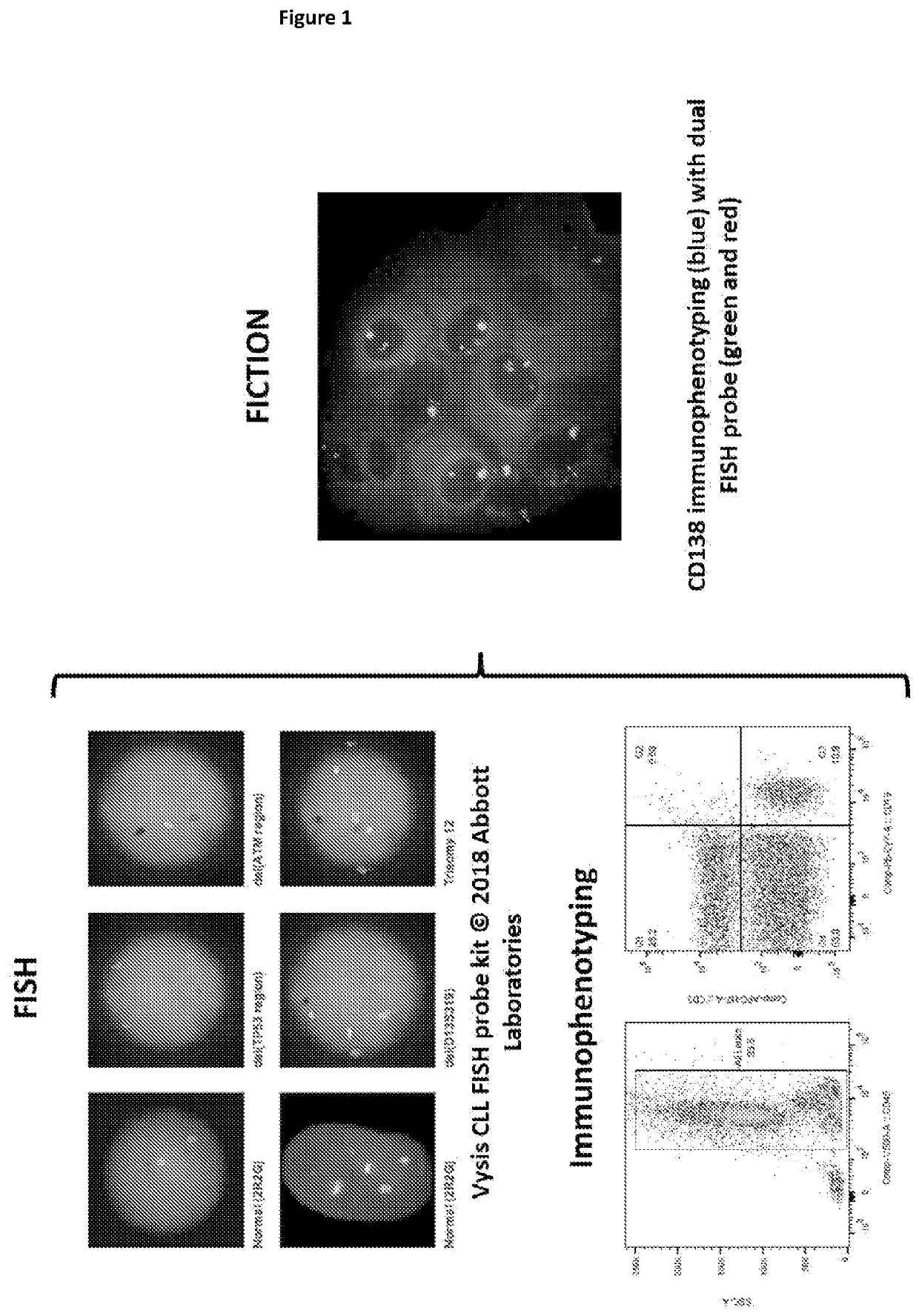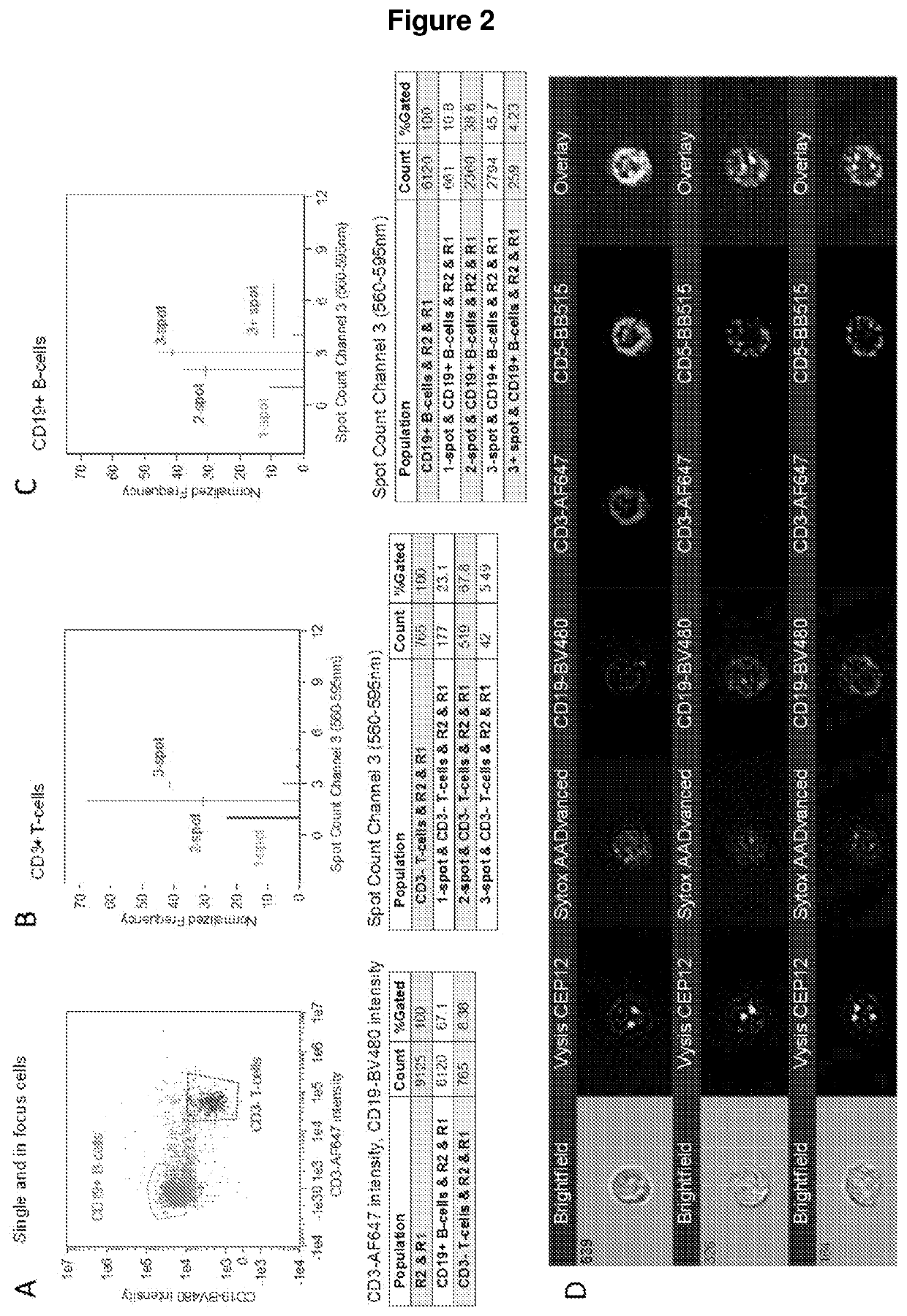Improvements in or relating to cell analysis
a cell analysis and cell technology, applied in the field of cell analysis, can solve the problems of limiting the number of cells that are analysed, low method sensitivity, labour intensive, etc., and achieve the effect of high throughput and high sensitivity
- Summary
- Abstract
- Description
- Claims
- Application Information
AI Technical Summary
Benefits of technology
Problems solved by technology
Method used
Image
Examples
example results
[0355]The first fixative tested in the protocol was a methanol based buffer of 70% methanol / 4% formaldehyde / 5% acetic acid, which was a combination of the Carnoy's fixative used for traditional FISH and FISH-IS (as, for example, described in Minderman H, Humphrey K, Arcadi J K, et al. Image Cytometry-Based Detection of Aneuploidy by Fluorescence In Situ Hybridization in Suspension. Cytometry Part A 2012; 81A:776-784) and the 4% formaldehyde fixative used in the immuno-S-FISH protocol (as, for example, described in K. Fuller, S. Bennett, H. Hui, A. Chakera and W. Erber. Development of a robust immuno-S-FISH protocol using imaging flow cytometry. Cytometry Part A. 2016; 89A:720-730).
[0356]Experiments were performed with CD3-BB515 immunophenotyping (FIG. 6) and chromosome 1 or 12 enumeration probe (CEP1 or CEP12), which hybridise to highly repetitive human satellite DNA sequences located near the centromere of the chromosome, on healthy donor nucleated cells. FISH was expected to resul...
example 2
owFISH Compared to Earlier Prior Art Technology
[0366]The following example presented in Table 9 compares Immuno-flowFISH technology against Immuno-S-FISH Technology. While Table 10, provides the broad working ranges for analysis of a peripheral blood mononuclear cell (PBMC) preparation and the highly preferred optimum conditions for that methodology.
immuno-S-FISHComparative variations in theProtocol(Fuller et al., CPA 2016)Immuno-flowFISH 2018protocolsPeripheral blood 1.Ficoll-paque density 1.RBC lyse with BDThe RBC lyse step is preferable tomononuclear cellcentrifugation (this limitsPharmLyse a buffereddensity gradient purification for(PBMC) preparationusefulness of theammonium chloride-baseddiagnostic applications as there isprotocol for minimallysing reagent at pHless cell loss which is essential forresidual disease7.1-7.4minimal residual disease detection.detection) on fresh 2.Wash cells in PBS (noRBC is commonly used in flowperipheral blood onlyFBS or BSA)cytometry.Bone marrow ...
PUM
| Property | Measurement | Unit |
|---|---|---|
| Temperature | aaaaa | aaaaa |
| Temperature | aaaaa | aaaaa |
| Temperature | aaaaa | aaaaa |
Abstract
Description
Claims
Application Information
 Login to View More
Login to View More - R&D
- Intellectual Property
- Life Sciences
- Materials
- Tech Scout
- Unparalleled Data Quality
- Higher Quality Content
- 60% Fewer Hallucinations
Browse by: Latest US Patents, China's latest patents, Technical Efficacy Thesaurus, Application Domain, Technology Topic, Popular Technical Reports.
© 2025 PatSnap. All rights reserved.Legal|Privacy policy|Modern Slavery Act Transparency Statement|Sitemap|About US| Contact US: help@patsnap.com



